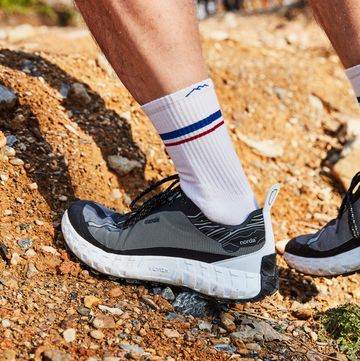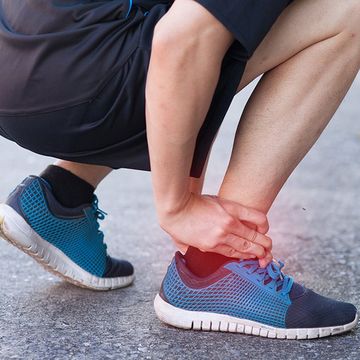In his work with the Division of Sport, Exercise, and Nutritional Sciences at England’s University of Central Lancashire, Jonathan Sinclair, Ph.D., kept bumping into runners with troublesome Achilles tendons. That’s no surprise: According to various surveys, roughly 8 to 15 percent of all runner injuries affect the Achilles.
The injured runners would ask for Sinclair’s advice, but he didn’t know what to tell them, particularly with regard to the usefulness of low-cost insoles for Achilles injuries. “There was no data on the topic,” he explained to Runner’s World Newswire in an email, “so we decided to do the work ourselves, and see what we could learn.”
The result, just published in the journal Clinical Biomechanics, gives a thumbs-up to energy-absorbing insoles. Eleven of 12 runners experienced a lessening of Achilles tendon loading after they inserted the insoles. “Foot orthoses may serve to reduce the incidence of chronic Achilles tendon pathologies in runners,” the researchers concluded.
The paper uses the term “orthotics” where U.S. runners are more likely to say “insoles.” At any rate, the shoe insert tested by Sinclair and colleagues was the Sorbothane Sorbo Pro. The researchers say they have no financial stake in the company. “We picked this product because it is very popular and accessible in the U.K., and we thought that would give our study more resonance,” Sinclair told Newswire.
The experiment included 12 male runners (average age of 24) who reported running at least three times a week. In the lab, they ran over a mat at approximately 6:40 per mile pace. The mat included devices that measured their ground reaction force, and the movement and loading rate of the Achilles tendon with and without the insole.
There was no difference in peak ground reaction force between the two conditions. However, several measures of Achilles loading rates were significantly reduced with the insoles. “This probably happens because orthotics offer further cushioning to that already provided by the shoe midsole,” said Sinclair. “This causes the ankle to dorsiflex more, adding to the moment arm of the Achilles, which reduces the loading rate.”
Sinclair tested only the one type of insole but believes that “others with similar characteristics would likely have the same effects.” He also notes that orthotics/insoles are not a universal injury cure for runners. “Using the wrong orthotic can lead to complications that would not otherwise have arisen,” he said. The results of the new experiment may apply only to Achilles tendon injuries.
This study adds to a general trend in recent foot strike and injury papers. It appears that relatively thin-soled, low-profile shoes may be advantageous for runners with knee injuries, while thicker, softer shoes may help runners with Achilles and calf injuries.








